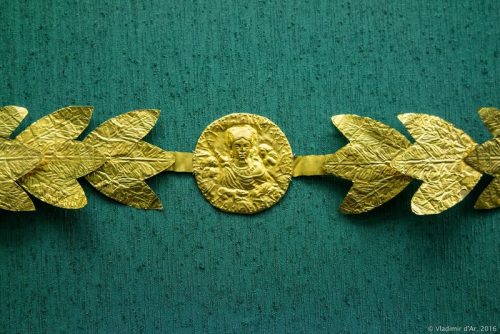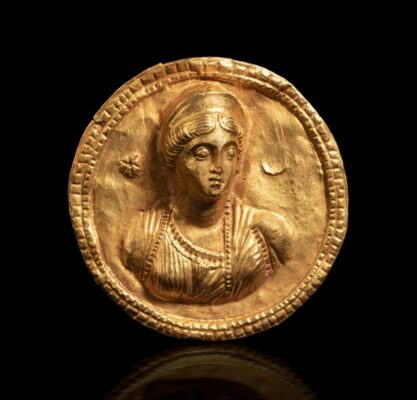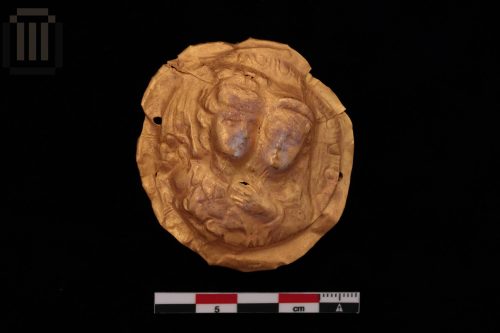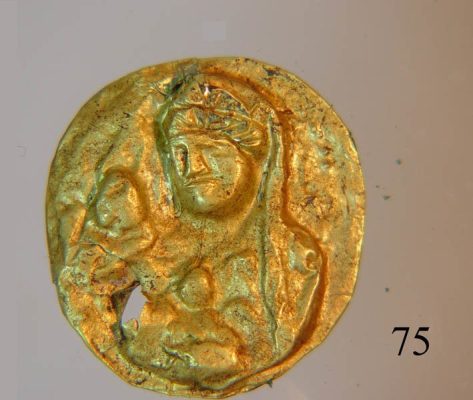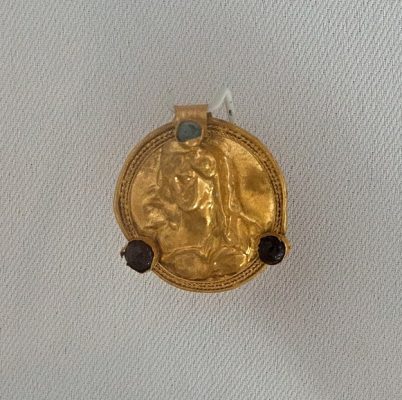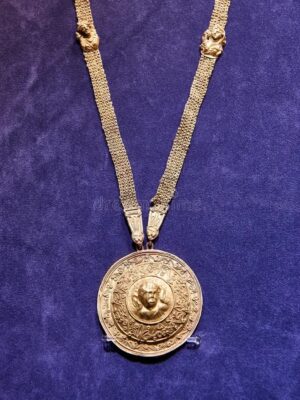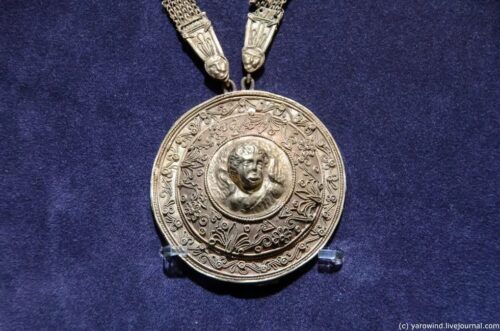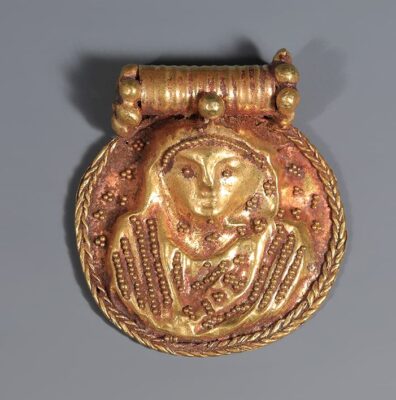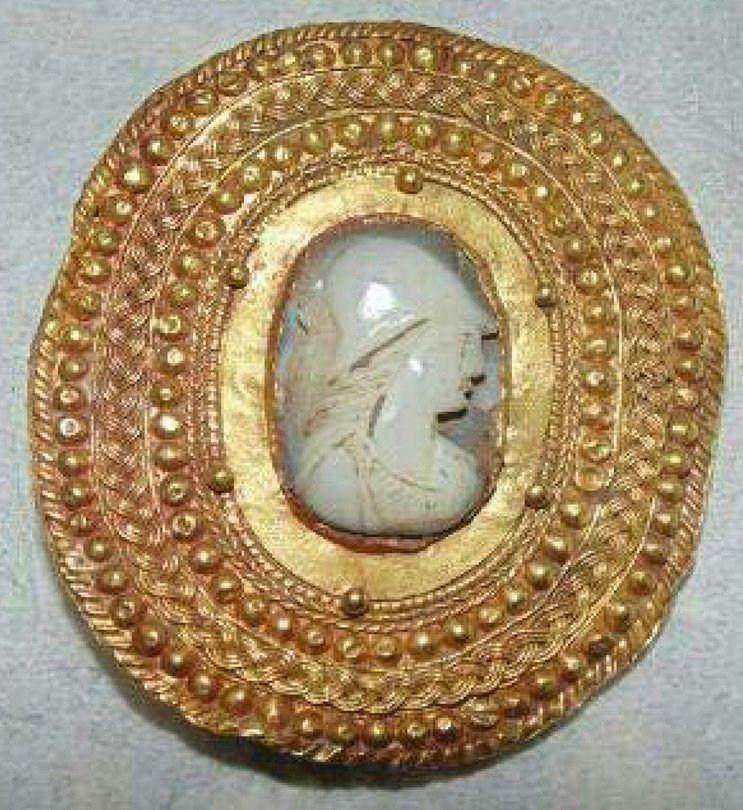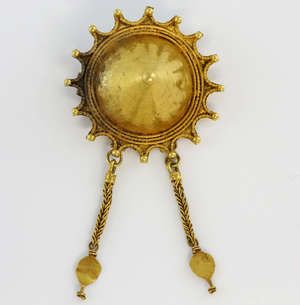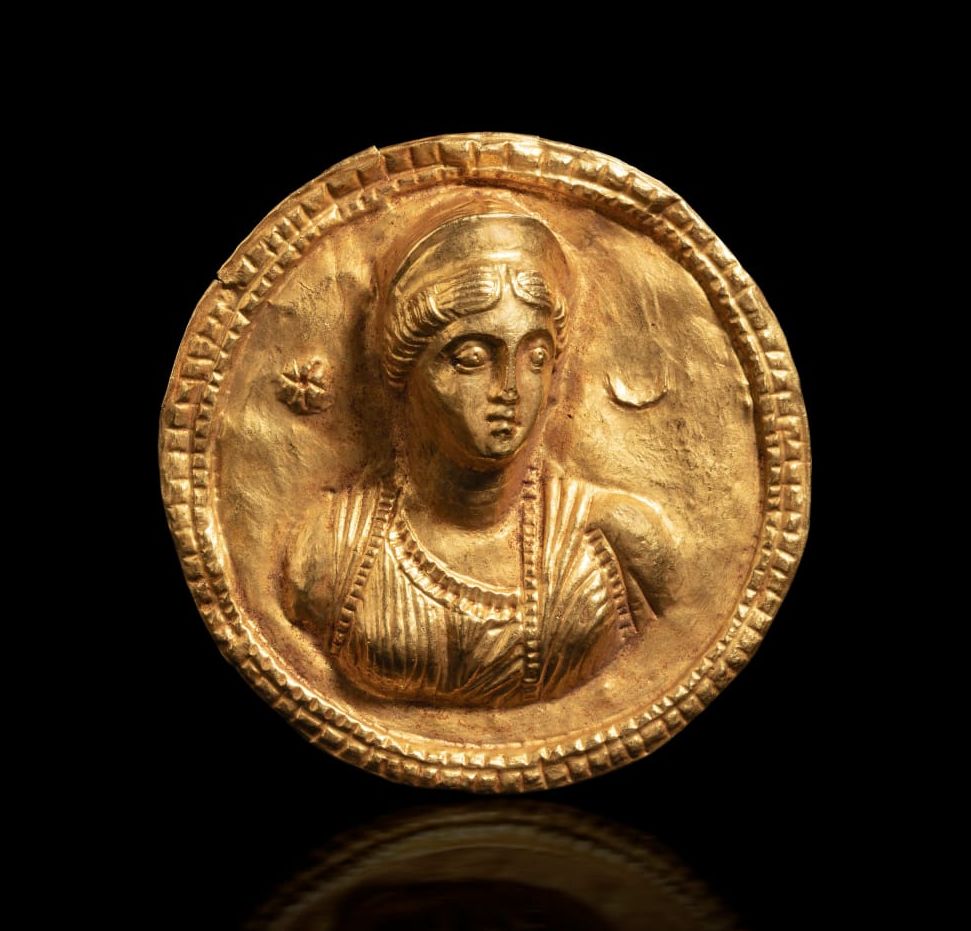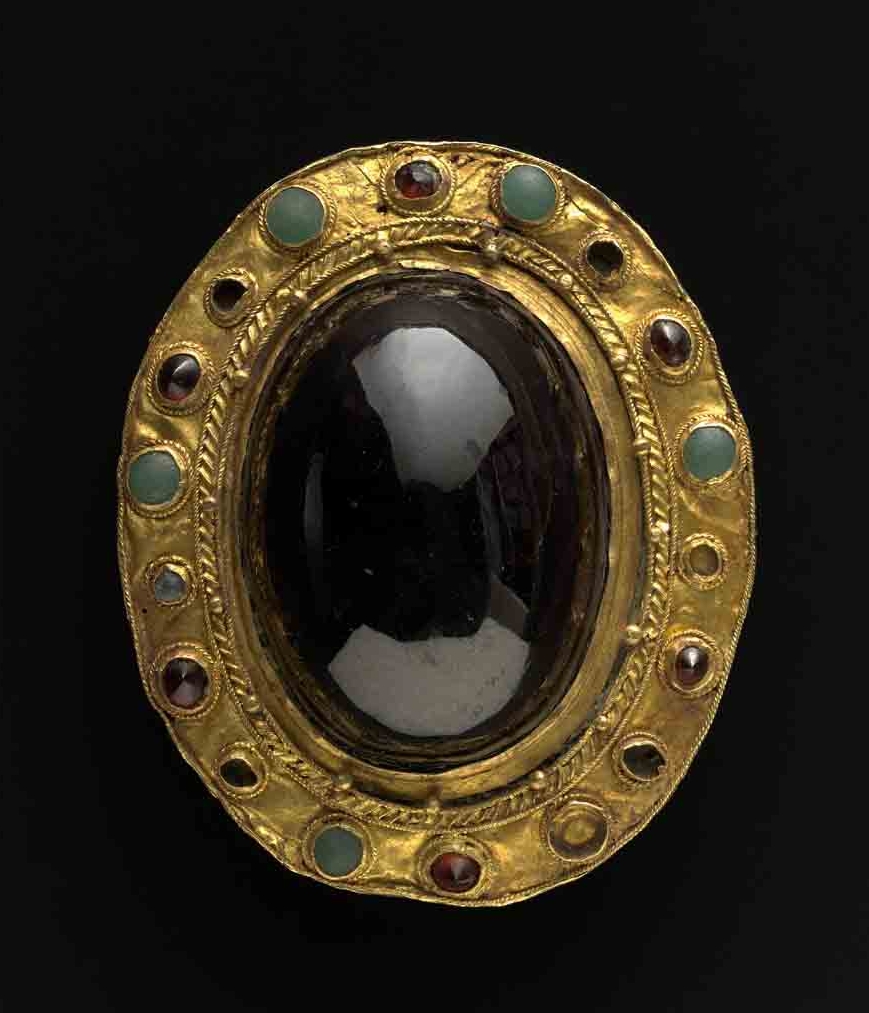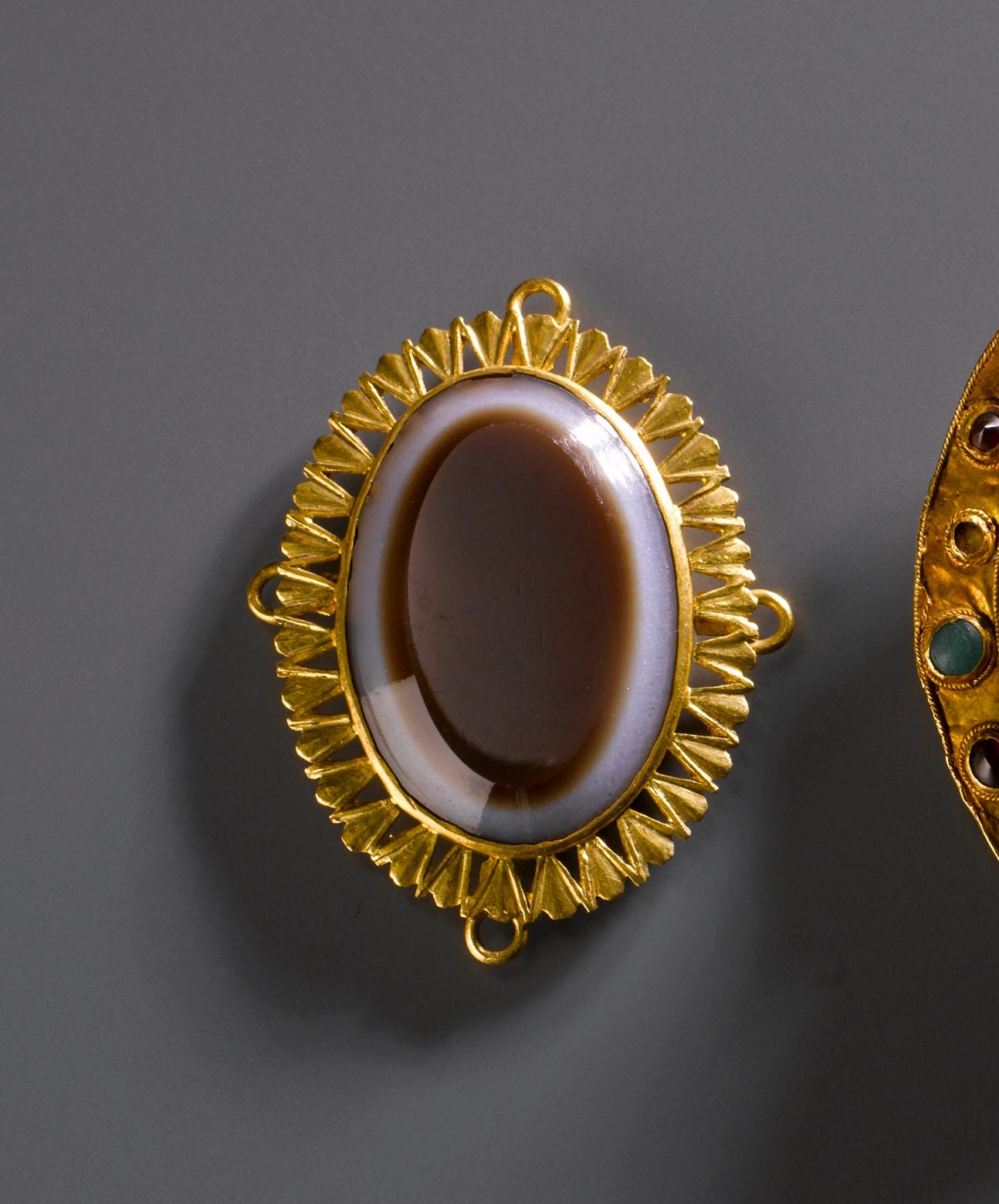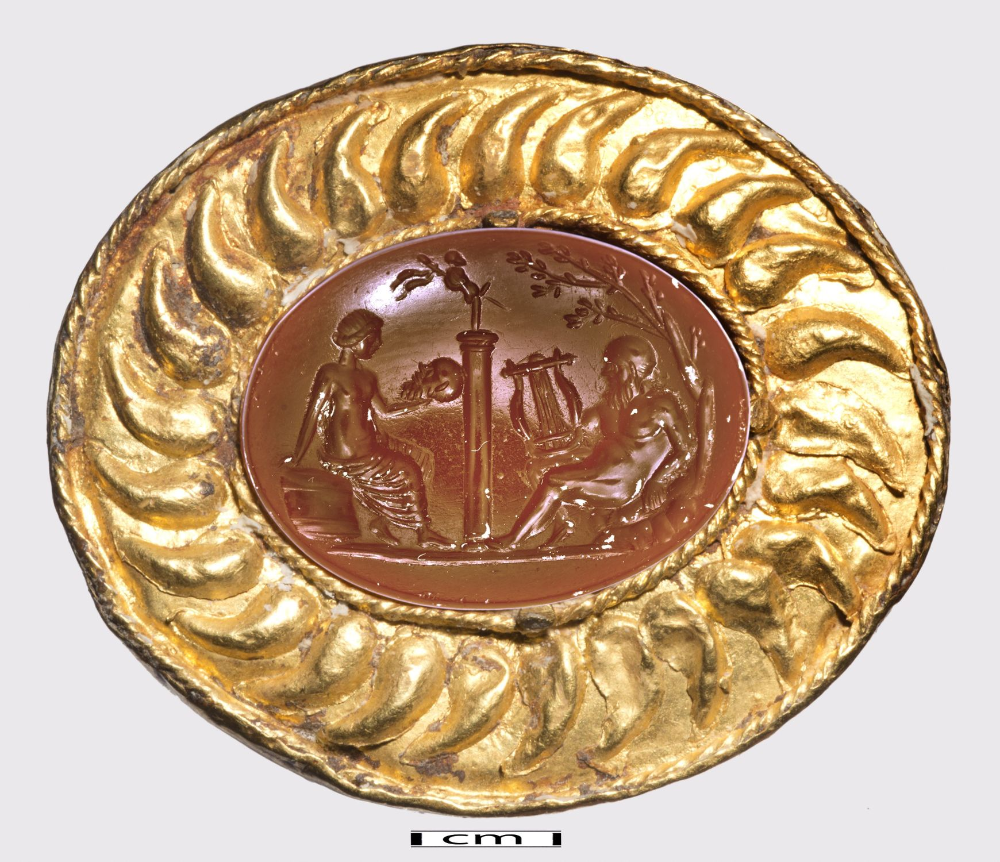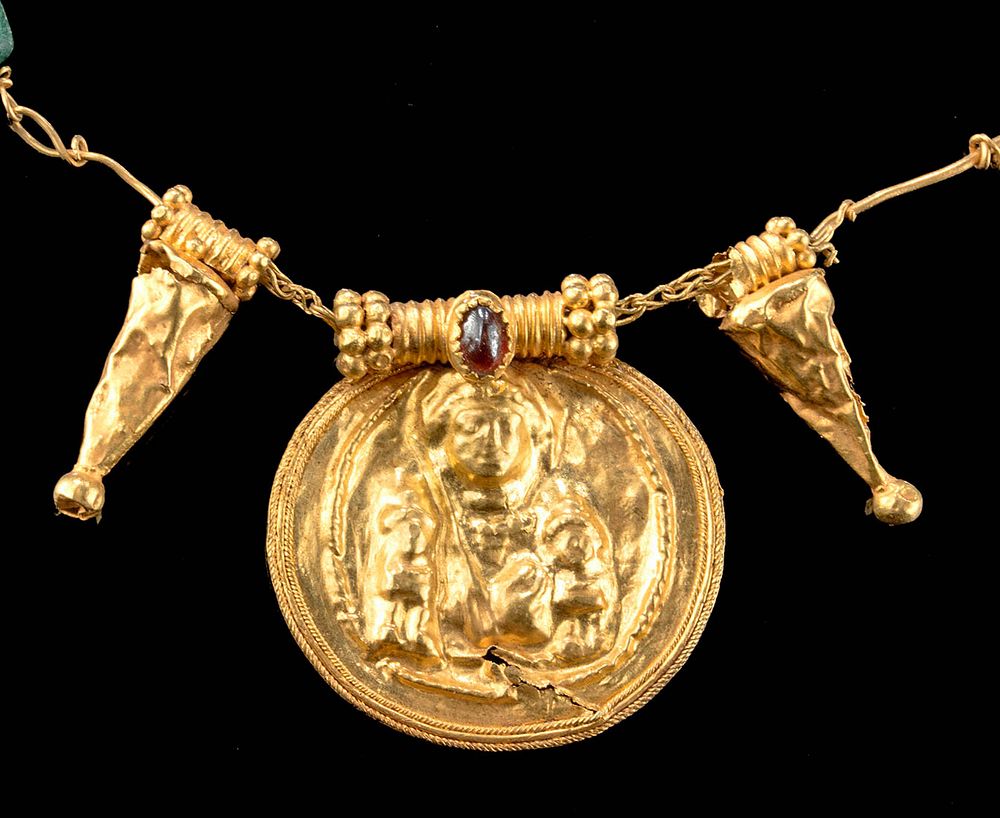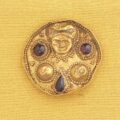
http://colorsandstones.eu/
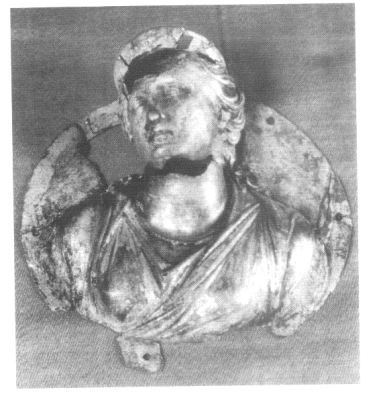
Source:
Gocha R. Tsetskhaldze; Archaeological investigations in Georgia in the last ten years and some problems of the ancient history of the Eastern Black Sea region [1994] https://www.persee.fr
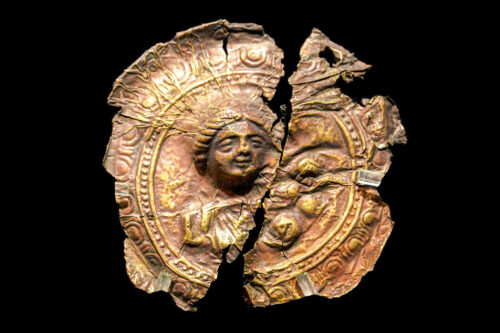
Bulgaria http://colorsandstones.eu

read more
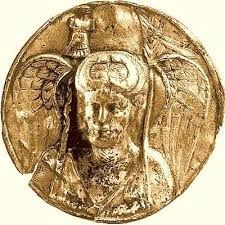
https://colorsandstones.eu

http://colorsandstones.eu
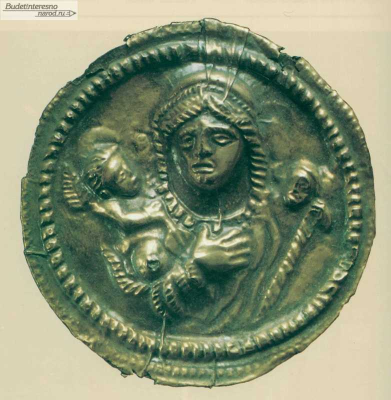
https://colorsandstones.eu/2021/06/11/kuban-krasnodar-territory/
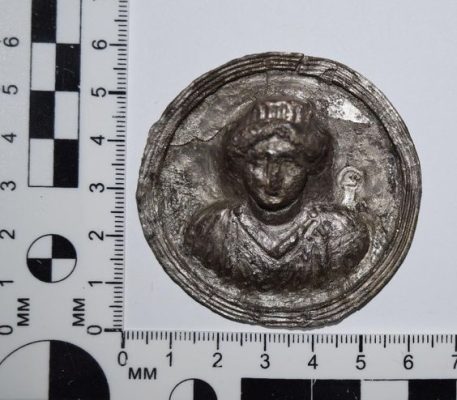

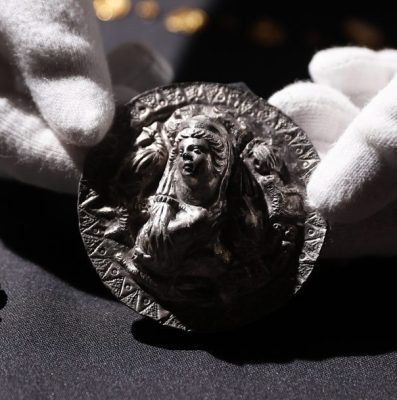
https://colorsandstones.eu


The shield is round, convex, made of a thin silver plate, with a relief bust image of the goddess. The face is shown from the front, on the head there is a headdress or a tiara from under which the hair is shown with a strip with oblique notches, on the shoulders and chest the wrapped chiton is shown with oblique stripes. The figure is framed by a circle filled with small dots, then there are vertical notches in groups, the horizontal outer belt is covered with thin lines filled with a zigzag.
Northern Black Sea region, Rostov Region, Archaeological Museum-Reserve “Tanais” https://archivogram.top/36808536-fibula-broshy
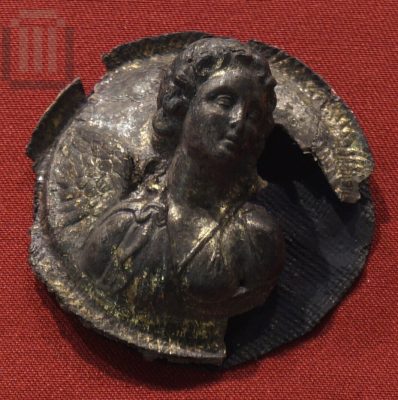
Diameter : 7.5 cm. Hellenistic
Greek Hellenistic, Archaeological Museum of Serres, Greece
https://nationalarchive.culture.gr
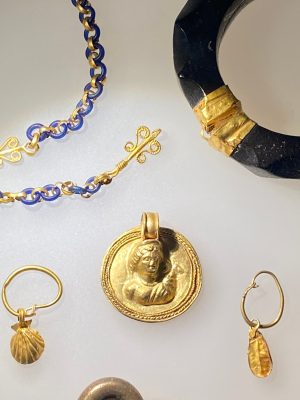
https://colorsandstones.eu
Two gold medallions with Aphrodite. Female burials Frontovoe 3, Crimea; 2nd century
https://colorsandstones.eu
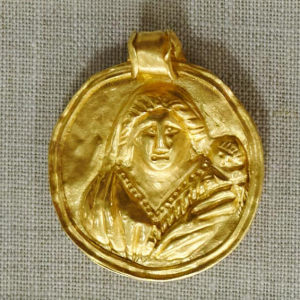
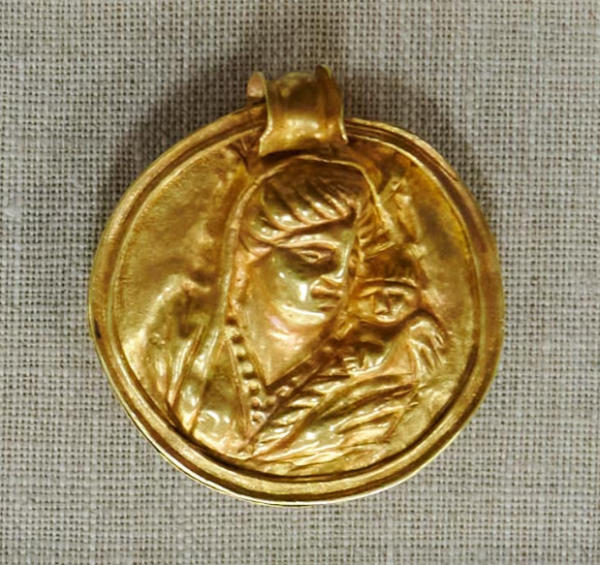
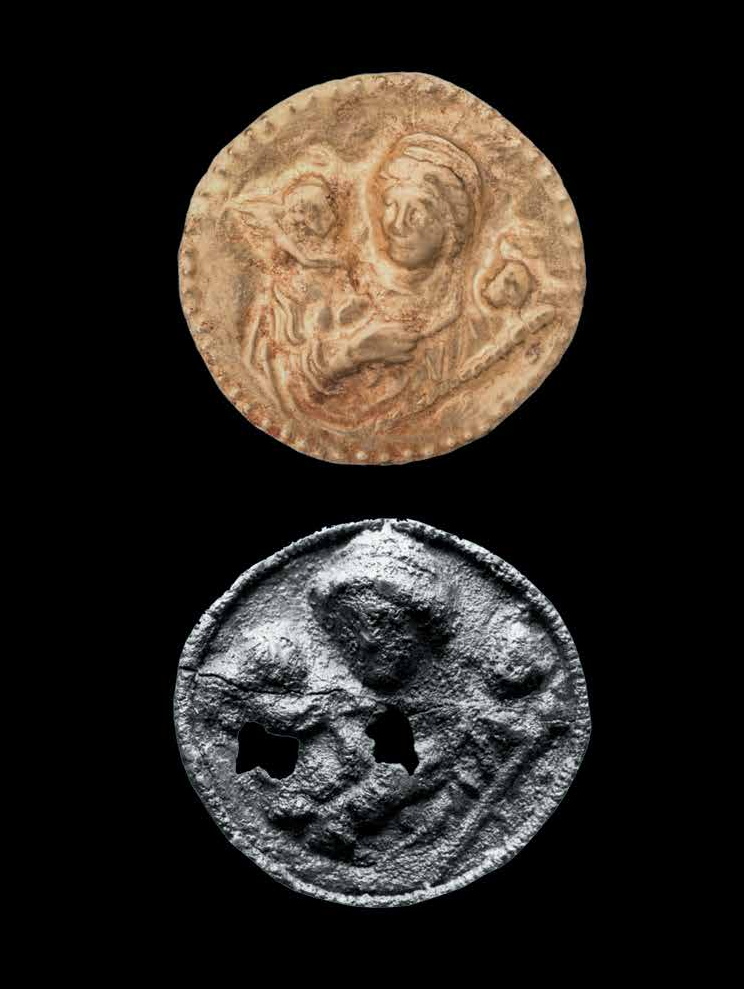
https://colorsandstones.eu
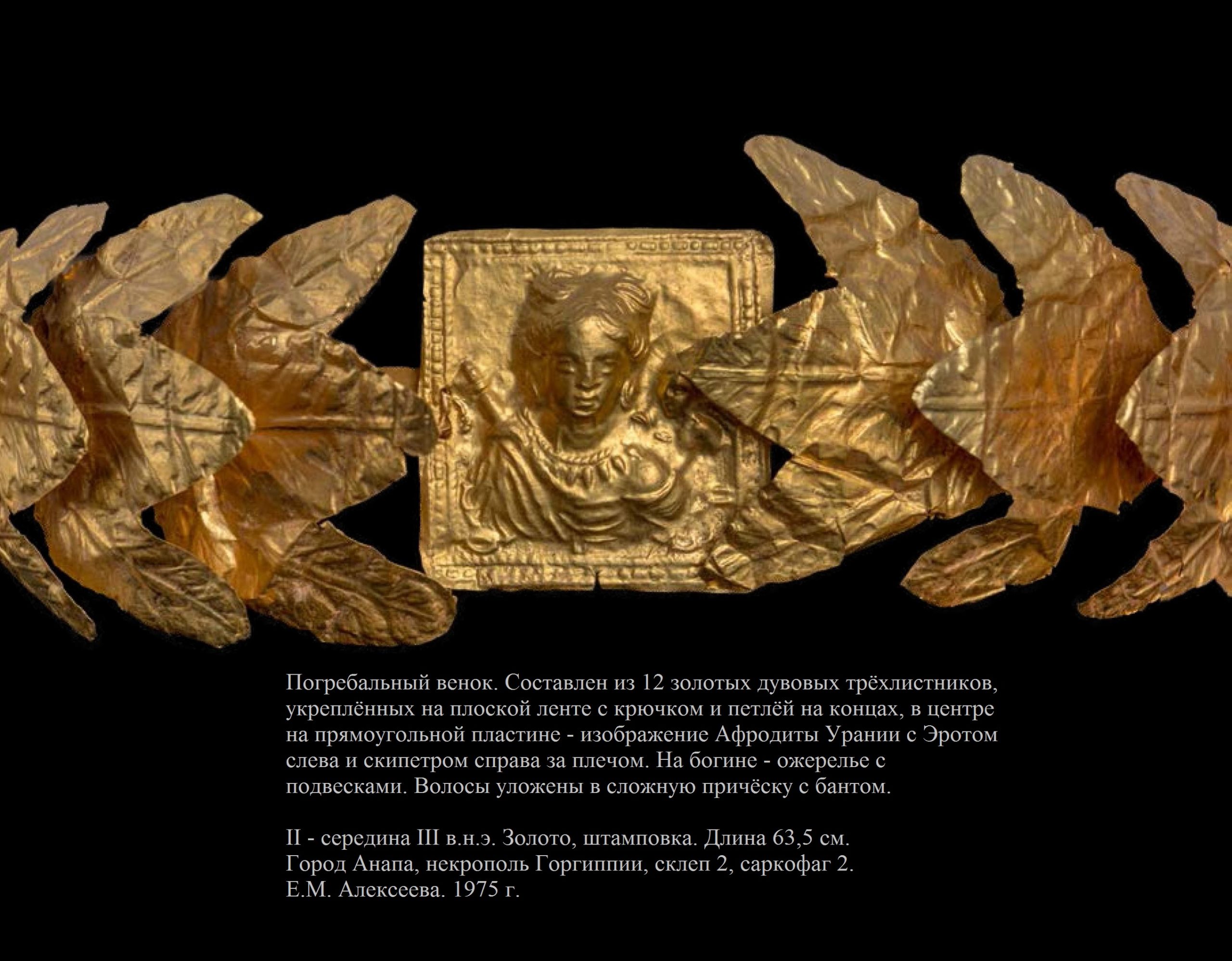
https://colorsandstones.eu/kuban-krasnodar-territory/
https://colorsandstones.eu/diadem-with-a-medallion

https://colorsandstones.eu
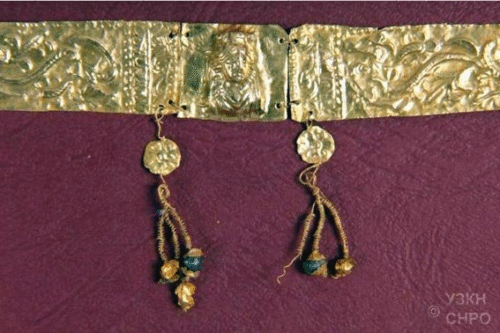
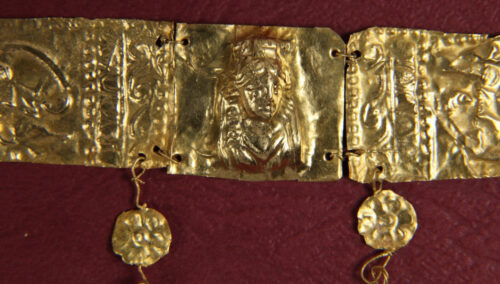
Hellenistic, 4th – 2nd century BCE
Gold diadem composed of three parts: a central part with a representation of a female bust, two ribbon-like parts at the ends decorated with a grapevine motif. These parts are connected with a thin gold wire.
At the junction of the ribbons in the central part, two pendants in the form of rosettes are placed, from which three pendants are hung, which end with inserted beads of glass paste.
Photo >> https://mvr.gov.mk/potragi-ischeznati/kulturno-nasledstvo


Length: 23 cm. Gold
“It consists of three sections connected by thin links. The two extremes are oblong wrought plates with floral decoration of air-leaves, boletus and rosettes. The central panel is square, with a relief bust of Artemis wearing a tunic girdled under her breast and a gourti on her back. Small rings are kept at the ends of the diadem to fasten it to the head. Minor wear on one edge.”
Archaeological Museum of Serres https://nationalarchive.culture.gr
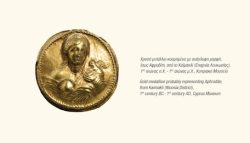
From Kaimakli, Cyprus; 1st C BCE – 1st C CE. Museum of Cyprus
Source https://www.pio.gov.cy
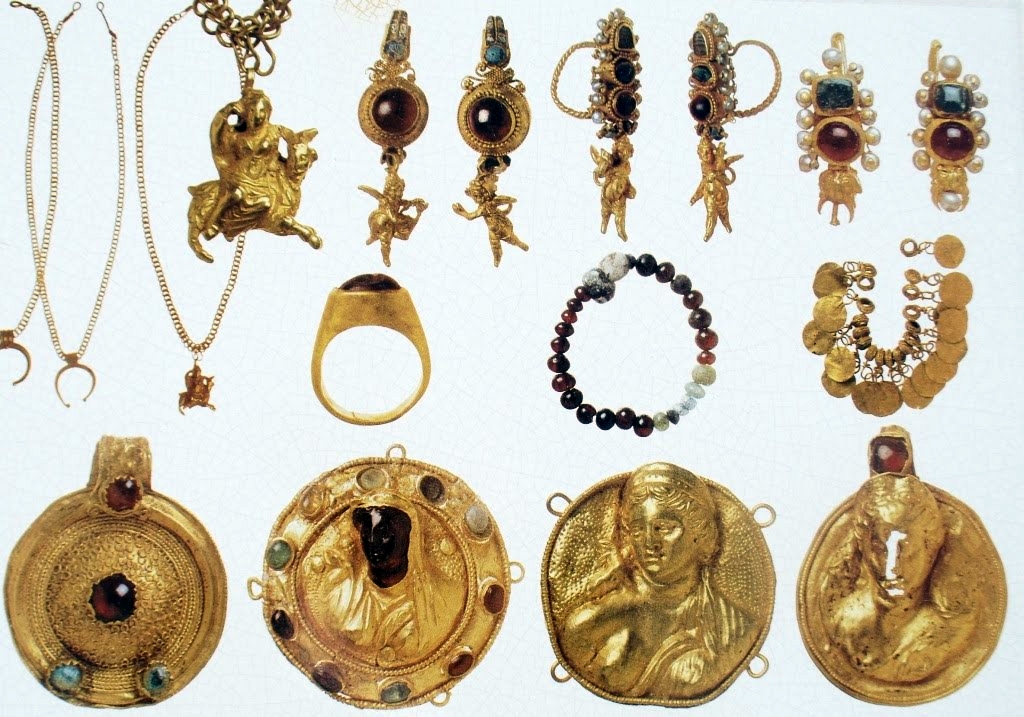
https://colorsandstones.eu/2021/12/28/greek-hellenistic-jewelry-from-delos/

Gold medallion, a part of a necklace, with Aphrodite and Eros; 3rd-2nd century BCE. Turkey [confiscated]
Diameter 3.5 cm
Tokat Museum collection 15.08.1983
Source: A Group of Gold Necklaces from Tokat Museum, Ali Yalçın TAVUKÇU, Sümeyra GÖRAL (2020)
Tokat Müzesinden Bir Grup Altın Kolye. Atatürk Üniversitesi Sosyal Bilimler
Enstitüsü Dergisi, 24 (3), 1473-1487.

Lit.: N. Sevinç, M. Treister, Metalwork from the Dardanos Tumulus, Studia Troica 13, 2003, 215–260.
Photo source https://www.dha.com.tr/foto-galeri/troya-muze
Gold medallion [a chain link] with Aphrodite and Eros; 4th C BCE. Gold and glass, 3.3×2.3 cm (with loops)
ГИМ 54791/679 https://catalog.shm.ru
Together with ГИМ 54791/680 https://catalog.shm.ru
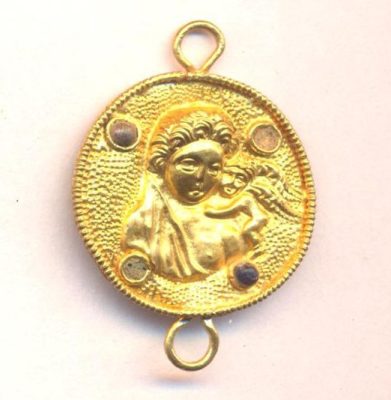
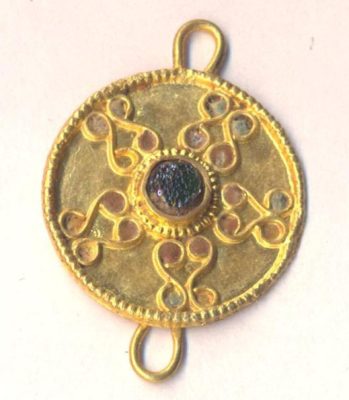
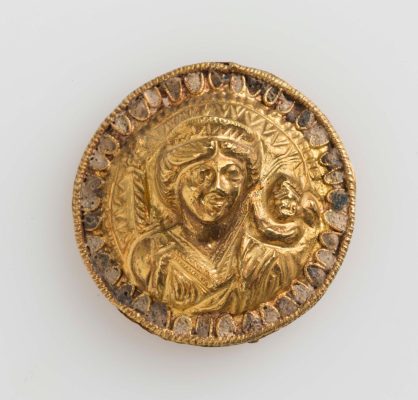
Northern Black Sea Coast,
Bosporan Kingdom
Collection: The Hermitage [Item withdrawn from the museum’s online database]
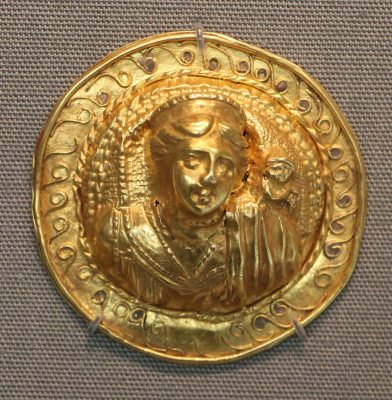
Collection: Altesmuseum, Berlin https://id.smb.museum
Photo by Sailko

Northern Black Sea Coast,
Bosporan Kingdom
Collection: The Hermitage [Item withdrawn from the museum’s online database]

Photo https://drmonicamjackson.wordpress.com/blog/
Gold necklace with a medallion, Aphrodite, Artemis and Eros. 3rd-2nd century BCE, ancient Odessos.
In the center of the big medallion there is a bust of Eros, portraits of Artemis and Aphrodite are part of a chain
Archaeological Museum Varna, Bulgaria.
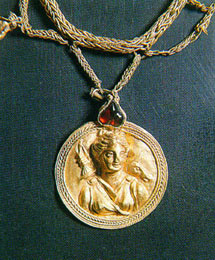
https://colorsandstones.eu

Staatliche Antikensammlungen, Munich, Germany
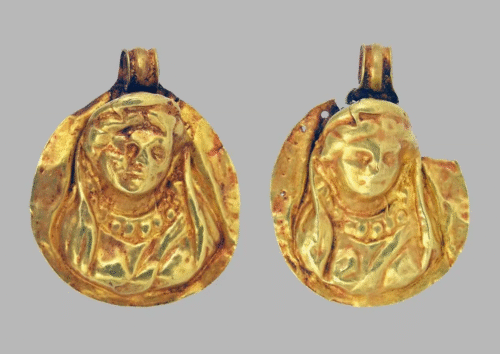
https://nmiu.org/exhibits/treasury/arch/251
Medallions depicting Aphrodite, 2nd-1st centuries BC.
“2–1st century BC Gold. Mound near the village of Vasylivka, Donetsk region. Excavations by B.Yu. Mikhlin, 1972.
These medallions were part of a necklace. They probably depict the goddess Aphrodite, dressed in a Greek chiton (a linen or woolen garment resembling a shirt, girded with a belt with an overlap) and a himation (a long rectangular piece of fabric draped over the figure) thrown over her head. Her head is adorned with a stephane diadem, and a necklace is worn around her neck. Similar medallions and plates with bust images of deities are found among late Hellenistic jewelry.”
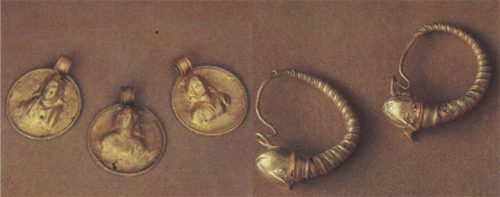
http://rostov-region.ru
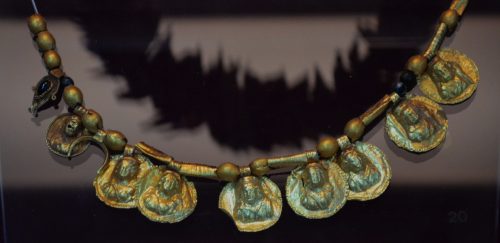
Archaeological Museum of Lamia, [Central] Greece.
Source https://greek-museums.tumblr.com

http://colorsandstones.eu

http://colorsandstones.eu

Silver roundels / medallions / from Taxila with an image of a goddess
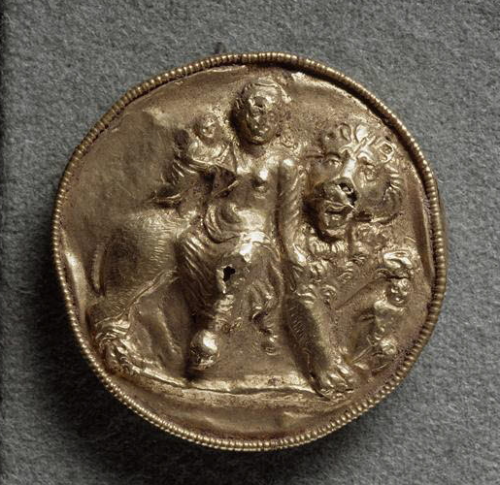
http://colorsandstones.eu

http://colorsandstones.eu
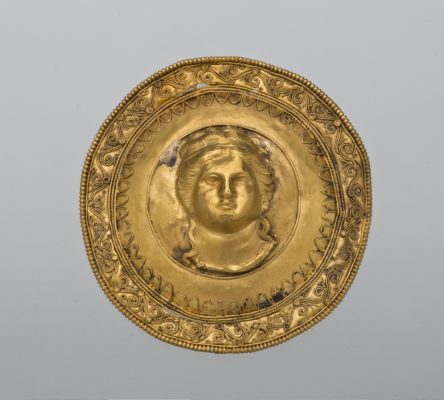
Found: Panticapaeum. Crimea, the environs of Kerch
Collection: The Hermitage, П.1834-63

400-350 BCE; Found: Kul-Oba barrow. Crimea, the environs of Kerch
Collection: The Hermitage, КО.-5

height: 15,5 cm, D-7,3 cm (disc)
Created: 4th century BC
Found: Bolshaya Bliznitsa Barrow. Krasnodar Territory, Taman Peninsula, near the Cossack village of Vyshesteblievskaya
https://www.hermitagemuseum.org

Musée du Louvre, Département des Antiquités orientales, AO 24760
[read more]

Source [page doesn’t exist anymore] https://www.langantiques.com

[read more]
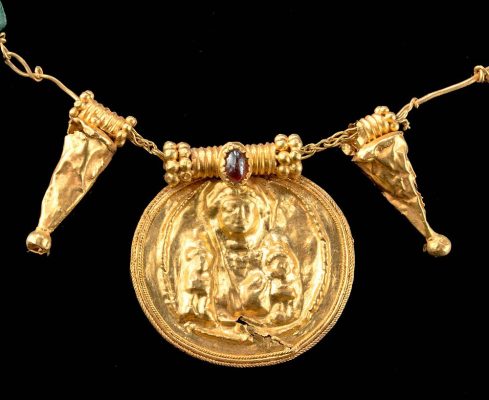
[read more]
Medallions considered to be Byzantine:
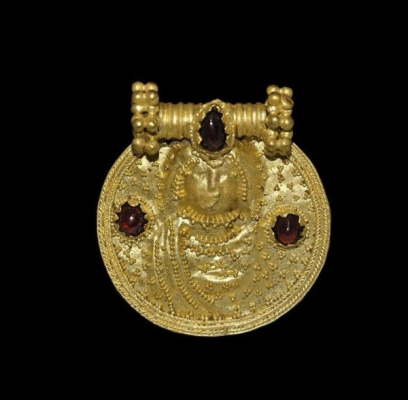
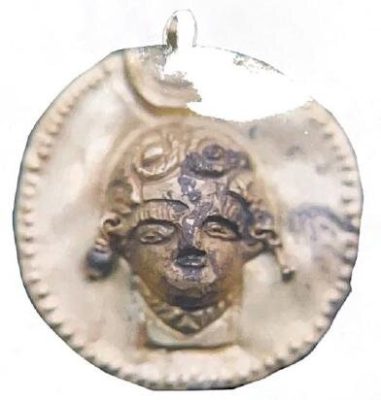
Read more >> https://colorsandstones.eu

https://colorsandstones.eu
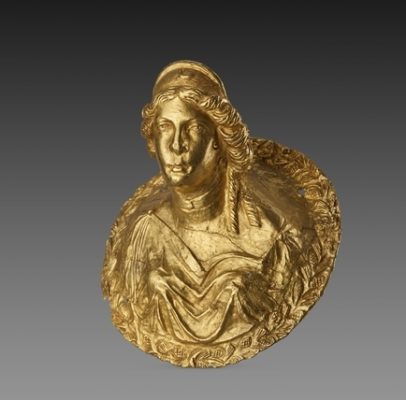
© Fondation Gandur pour l’Art, Geneva. Photographer: Grégory Maillot
https://onlinecollections.fg-art.org:443
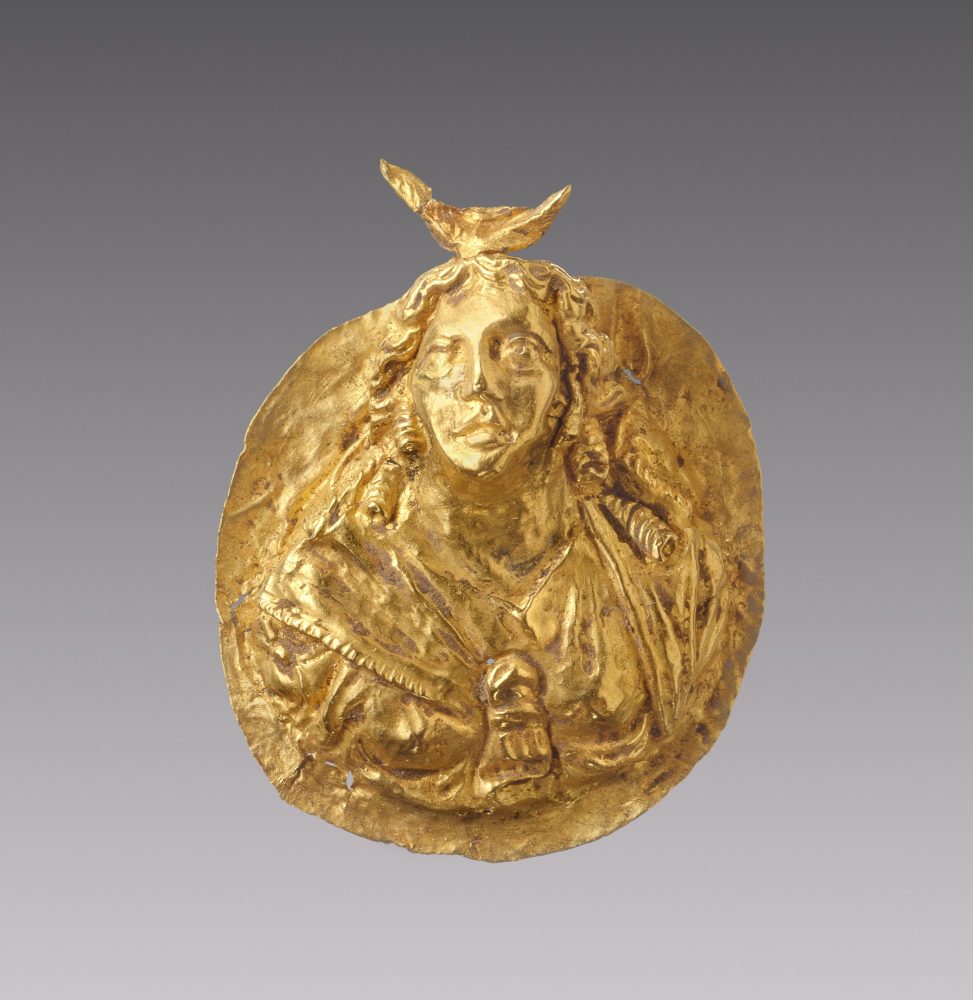
Basel Antiquities Museum, © Pinacothèque de Paris
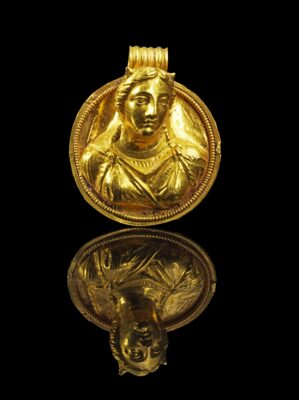
Gold pendant with a bust of Io. Roman, 1st – 2nd century.
4.89g, ø 3cm, L 3.6cm.
Round medallion with the sculptural, draped bust of Io with cow horns. A wide, reliefed eyelet at the top. A pseudo-granulated, circumferential gold wire on the edge.
Provenance: Acquired in 1981 from the A.C. collection, England. Before that, English art trade in the late 1970s.

Tartus, Syria; 275 – 325 CE
In Louvre [read more]

ø 2.2 cm [M. Humar] Tomb of Ayn Jawan, National Museum, Riyadh.
Medallions with carved heads
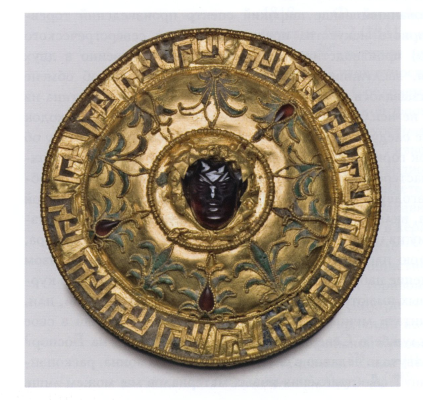
After M. Treister
Read more >> https://colorsandstones.eu

1st century, Saudi Arabia; Thaj city, Tell al-Zayer site
[read more]
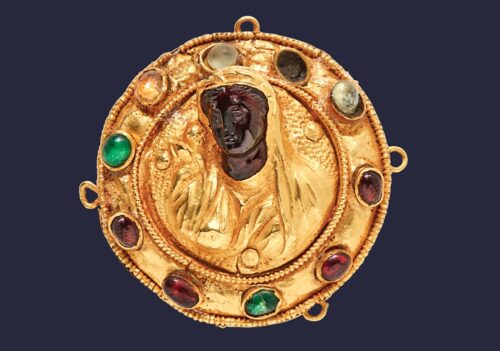
https://colorsandstones.eu/2021/12/28/greek-hellenistic-jewelry-from-delos/
A special case – a pair of gold rings with the image of the goddess Athena, whose face was carved from garnet. Early 3rd century BCE.
They were found in the female burial at the necropolis of Panticapaeum, Crimea, Kerch, together with a gold coin with a portrait of Alexander the Great, a gold wreath with an intaglio and eight rings with colored stones, which adorned each finger of the buried woman (except for the big ones). This custom, alien to the Greeks, can be found in Scythian burial mounds.

Carnelian busts of a woman and two boys.
https://colorsandstones.eu

http://colorsandstones.eu

http://colorsandstones.eu
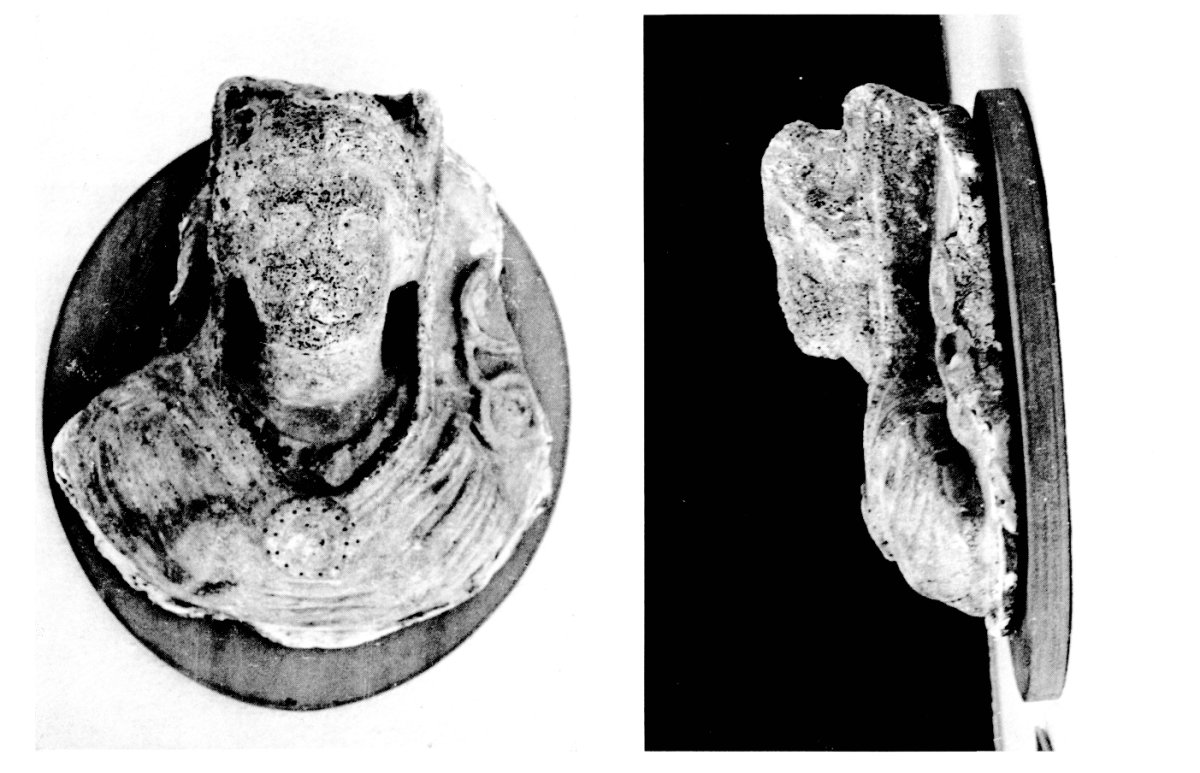
https://colorsandstones.eu/2023/05/07/cybele-medallion-d-b/

3rd C BCE
www.britishmuseum.org

[read more]

http://colorsandstones.eu

Photo after Osmund Bopearachchi
http://colorsandstones.eu

Greek, Hellenistic,
150-100 BCE
Gilded silver, diameter 7 cm
In the MFA Boston inv. no. 1985.333


National Museum of Antiquities of Tajikistan (Dushanbe)


in MFA Boston
- Золотой медальон из Гавара с изображением Исиды-Деметры и Гора-Гарпократа; Hasmik Margaryan https://www.academia.edu
- Lit.: M. Treister, Synkretische Göttinnen auf dem Schmuckwaren der ersten nachrischtlichen Jahrhunderten aus Phanagoreia und Gorgippia und einige Beobachtungen zur Ikonographie des Aphodite Ourania im Kimmerischen Bosporos https://www.academia.edu
- M. Treister, Gold Funeral Wreaths of the Bosporan Kingdom 4th c. BC – 5th c. AD. (genesis and chronology of the main types) https://www.academia.edu

